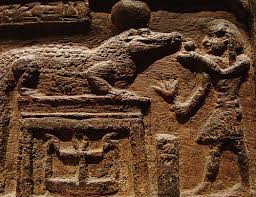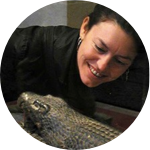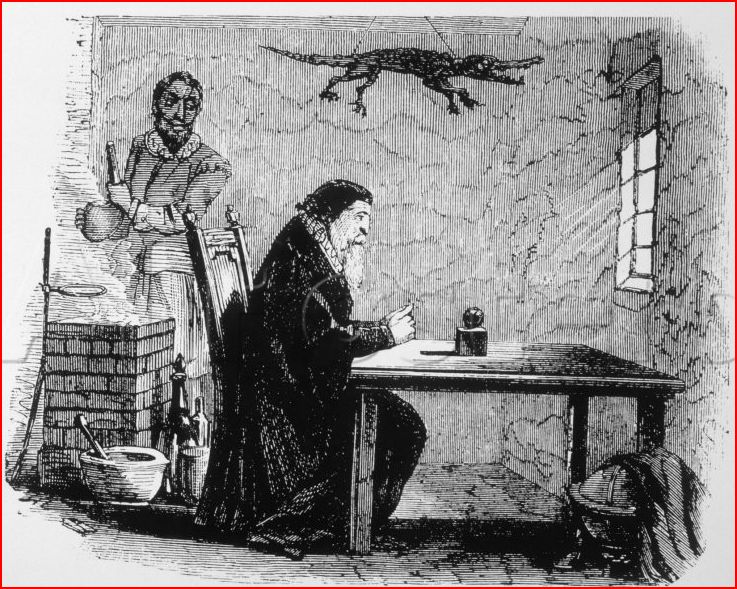About This Project
Why did alchemists hang crocodiles from the ceilings of their shops? Why did ancient Egyptians worship crocodiles? We noticed that crocodiles can recover from extreme injury.. What is the source of this resilience? New studies suggest that crocodiles have a unique ability to fight infection. Become a backer and help us sequence genes of crocodiles and discover the source of the myth of the Apothecary Crocodiles. There's a good chance we'll find some new tools in the fight against human diseases.
Ask the Scientists
Join The DiscussionWhat is the context of this research?
Many people think of crocodiles as "Living Fossils". However, although the group is ancient, its living representatives, including alligators and crocodiles, are quite modern. They seem to have adaptations that make them uniquely resistant to disease and environmental stresses. In fact, studies have shown that these animals are extremely adept at repelling microbial invaders. Blood serum from crocodiles has been tested against virulent strains of staphylococcus and other pathogens and shows high levels of antibiotic activity. The changing environment around us may expose us to unique threats from novel pathogens and exposures. What can we learn about resistance and resilience from the crocodilians? Let's learn how their genome adapts to new environmental and microbial stressors.
What is the significance of this project?
We are running out of antibiotics. In fact, hospital acquired infection, often untreatable, is the 4th leading cause of death today. Modern approaches to developing drugs and materials for human use frequently take a close look at animals that have mastered unique approaches to surviving in often hostile environments. Crocodilian species appear to be equipped with a highly evolved system of responding to environmental threats. If we can learn from their genomes how they resist pathogens and respond rapidly to changing environments we may be able to use the information to develop much needed alternatives to traditional antibiotics. Why should we re-invent the wheel when existing genomes have already mastered resilience. The crocodile genome will get us started.
What are the goals of the project?
We plan to examine hundreds of candidate genes for immune response, antimicrobial defense, cellular repair and physiological function. We have a complete set of samples of all true crocodiles so we can compare genetic sequences from species in difference environments to understand how the variation in the DNA that allows these unique animals to persist and adapt to changing global environments. We are using "baits" made from short DNA fragments from crocodiles and other living archosaurs ( aka chickens) to target specific gene regions and to "grab" these from the DNA samples. We need your help to cover the sequencing. Once we have the data, we'll compare multiple species simultaneously and look for molecules which allow species to respond to threats from pathogens and global change.
Budget
The great news is that we already have funding ($6500) for part of this project (library preparation, development of probe sets and sequence captures for hundreds of candidate loci) through MYcroarray, a company on the forefront of these techniques. By focusing on the crocodile exome we defined a smaller target of study (theoretically, about 0.1% of the nuclear DNA). We designed a set of 80-mer probes tiled every 40 nucleotides aimed to ensure, as much as possible, the coverage of all targets for exon capture for 18 crocodile species and 6 crocodilian relatives using DNA from fresh samples and from eleven historical museum specimens representing all of the true crocodiles and even some hybrid individuals. Your support covers the sample preparation and two lanes of sequencing using a non-profit provider ( New York Genome Center) to run our samples on an Illumina HiSeq. We will receive bioinformatics support available through our affiliations with the American Museum of Natural History.
Endorsed by
Meet the Team
Affiliates
Affiliates
Evon Hekkala
I study DNA from specimens from museums to understand how life has responded to planetary changes over time. I have sequenced DNA from crocodile mummies and from extinct crocodiles, as well as from hundreds of other specimens including century old frogs, lizards, chipmunks and leopards.This area of research (ancient or archival DNA) is rapidly expanding with new techniques and these are exciting times for scientists like me.
Although I conduct research on ancient DNA from many animals species, including crocodiles, I wasn't always a scientist and I think that crowd funding is a great way to let people know that everyone can be involved in science no matter what their background.
I had an interesting path to my career in science. You can check it out in more detail here, but I started out as an art student which is why, when I began to study crocodiles, I noticed all of the interesting paintings of "ceiling crocodiles" and the carvings of the crocodile god Sobek related to fertility and health. I happened to take a course on the history of evolutionary theory and was hooked. I switched to anthropology and began studying archeology while volunteering at natural history museums in Montreal, eventually landing a curatorial assistant position at Cal Academy in San Francisco. I think the combination or art history, natural history collections and conservation of crocodiles stirred my fascination with the ways in which people's belief systems intersect with science. Who can resist wanting to know more about the crocodiles hanging from the ceilings of apothecary shops? and who can resist the Crocodylus Apothecary Hypothesis?
Along with this project, we are analyzing genetic data from extinct crocodiles in Madagascar to look at patterns of recent colonization. One hypothesis that we are testing is that impacts associated with the arrival of humans and Nile crocodiles may have resulted in the extinction of Madagascar's endemic horned crocodile (Voay robustus).
Taylor Hains
I use DNA to study the evolution and ecology of endangered vertebrate species and apply these finding to develop conservation strategies. My work has included evolutionary and population studies on parrots, owls, and most recently crocodiles in both North and South America.
My primary research interest is in understanding the roles and mechanisms behind speciation and how this information can be applied to conservation management. Since the early 1900s, speciation research has made ground-breaking insights into macroevolution. However, with the ability to sequence the genomes of non-model organisms has allowed for researchers to look at demographic history of populations and species as well as identify genes that diverge between groups. This allows for the reconstruction of the story of how species come to be and are maintained. In addition, the biological rules behind when hybrids can or cannot be created between different species is still not fully understood. My research aims to provide more insight into the phenomenon of speciation and hybridization, particularly in endangered vertebrates using genomic-scale data. The goal would be to identify ecological speciation factors and speciation genes by using novel genomic techniques.
Additional Information



Project Backers
- 83Backers
- 104%Funded
- $6,000Total Donations
- $72.29Average Donation



